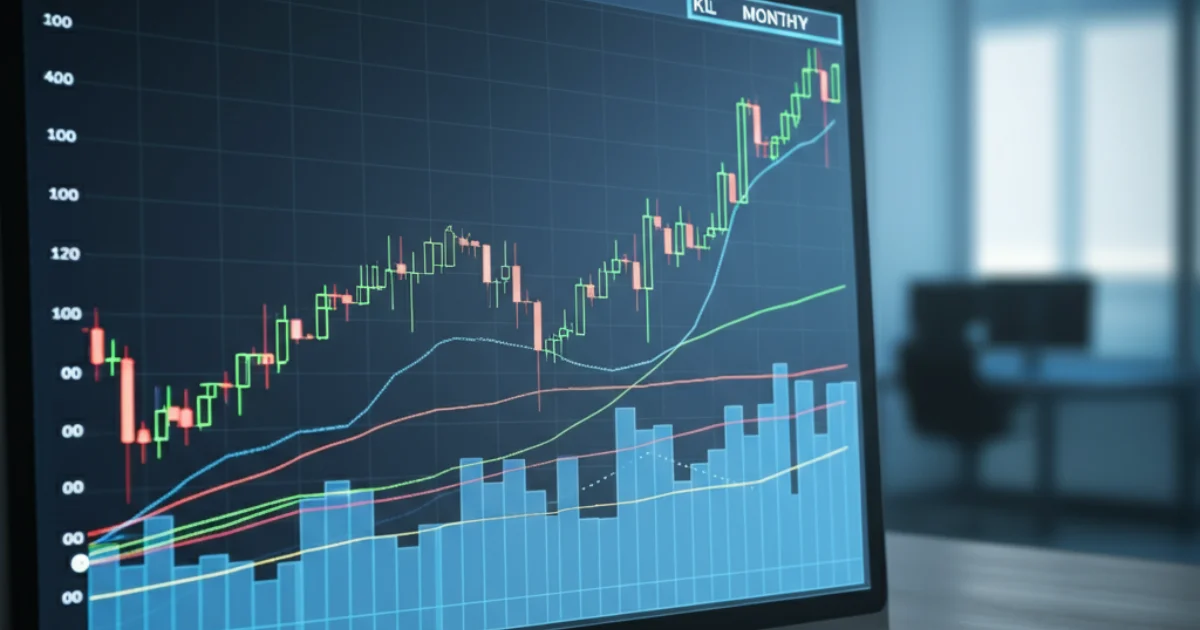The KL Monthly Chart has gained significance as an essential tool for identifying trends, tracking patterns, and making strategic decisions. Whether you’re an experienced investor, a budding financial analyst, or a business strategist, this chart can provide insights that elevate your approach. But what exactly is the KL Monthly Chart, and why does it matter?
At its core, the KL Monthly Chart is a long-term data visualization method used to analyze market movements, assess profitability, and predict future developments. Unlike daily charts that offer short-term snapshots, the KL Monthly Chart provides a broader, more comprehensive view by aggregating data over 30-day periods. This enables users to spot macro trends that shorter-term charts might miss.
This blog dives into understanding the KL Monthly Chart, its structure, and how to interpret its data for better decision-making. By the end, you’ll know how to harness its power to your advantage.
Key Components of the KL Monthly Chart
To use the KL Monthly Chart effectively, you must first understand its structure and the key indicators it employs. Here’s a breakdown to help you:
Price Movement Trends
The price movement refers to the variations in the price of assets over a month. The KL chart uses candlestick representations to indicate:
- Opening Prices (the price at the beginning of the month)
- Closing Prices (the price at the end of the month)
- Highs and Lows (the peak and trough reached during that month)
Together, these elements reveal whether the overall sentiment is bullish, bearish, or neutral.
Volume Data
Volume data measures the total amount of an asset traded during the month. Tracking trading volume alongside price trends is essential because it indicates market sentiment. High volumes during significant price changes suggest investor confidence, while lower volumes may signal uncertainty.
Moving Averages
The KL Monthly Chart often includes moving averages (e.g., 9-month or 12-month Simple Moving Average), which help smooth out price volatility and highlight trends. These averages make it easier to confirm whether an asset is in an upward trend, a downtrend, or a consolidation phase.
Indicators and Oscillators
Commonly used technical indicators such as the Relative Strength Index (RSI) or Moving Average Convergence Divergence (MACD) are overlaid on KL charts. These support more nuanced interpretations, especially when assessing whether an asset is overbought or oversold.
Support and Resistance Levels
Support and resistance lines on a KL Monthly Chart highlight price points where buyers or sellers enter the market, reflecting emotional thresholds. These help forecast potential reversals or breakouts.
What Historical Trends and Patterns Teach Us
Looking at the historical evolution of the KL Monthly Chart can offer invaluable lessons:
Long-Term Horizon Trends
Historical KL Monthly Charts reveal long-term cycles within markets. Take, for example, trends observed during periods of economic recessions or bull runs. Patterns such as “double tops,” “head and shoulders,” or “ascending triangles” tend to emerge and repeat when viewed from a monthly perspective.
Seasonal Patterns
For businesses and industries influenced by seasonality (think tourism, retail, or agriculture), KL Monthly Charts chart seasonal highs and lows on a macro scale. Financial strategists can use these recurring patterns to plan resources efficiently or adjust product pricing.
Sentiment Reversals
Major downturns or rallies are often preceded by sentiment reversals that are visible on monthly charts. For instance, a consistent failure to break above resistance followed by a breakdown below support often signals the start of a bearish period.
Historical case studies consistently reveal the value of spotting these patterns early, allowing participants to adjust their strategies appropriately.
Using the KL Monthly Chart to Make Smart Decisions
Whether you’re managing investments or devising marketing strategies, the KL Monthly Chart is a powerful ally. Here’s how you can apply its insights:
1. Strategic Financial Investments
For investors seeking higher returns such as stock or cryptocurrency trading, combining the KL Monthly Chart with fundamental analysis is vital. Focus on strong breakouts above resistance lines and confirm with volume data to identify bullish trends.
2. Risk Management
KL Monthly Charts help make more informed decisions about risk thresholds. For example, a company’s stock nearing its historical support level may indicate potential risks and encourage defensive actions.
3. Trends for Long-Term Business Strategy
Marketers and businesses, especially those tracking commodities or materials, may use KL charts to make informed purchasing or demand forecasting decisions.
4. Long-Term Portfolio Rebalancing
By assessing trends within KL Monthly Charts, you can rebalance investment portfolios, improving allocation percentages that align with their favorability long term. This helps optimize profitability.
Real-Life Application of KL Charts
Concrete examples always make abstract principles easier to grasp. Below are two brief case studies illustrating how the KL Monthly Chart can enhance decision-making:
Case Study 1
A logistics company, heavily reliant on crude oil for operations, identified steady dips in oil prices over a 9-month KL chart. This prompted the company to renegotiate supplier contracts, locking in lower rates. The move saved them thousands.
Case Study 2
An investment firm noticed a consistent bullish breakout signal on the KL Monthly Chart of mid-cap tech stocks. Using this, they pushed further funding into tech startups and yielded a double-digit return by the year’s end.
These use cases demonstrate the chart’s practical functionality in diverse scenarios.
Unlocking the Potential of KL Monthly Analysis
The KL Monthly Chart is more than just a visualization tool; it’s a key that unlocks macro perspectives often hidden in daily noise. From financial analysis to operational strategy, its applications are vast and transformative.
If you’ve yet to explore the KL Monthly Chart for your operations, now’s the time. Whether you’re prioritizing investment opportunities, optimizing workflows, or navigating competitive markets, this invaluable tool has something to offer.
Still not sure where to begin? Explore industry-proven tools or seek expert-led tutorials to maximize your learning. Leverage the KL Monthly Chart today to make data-driven decisions and stay one step ahead.

